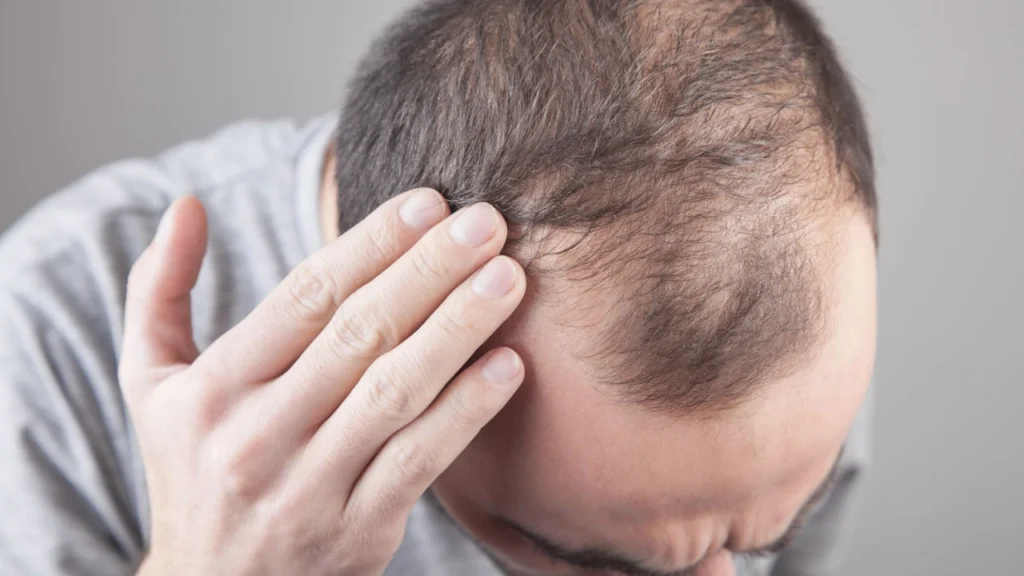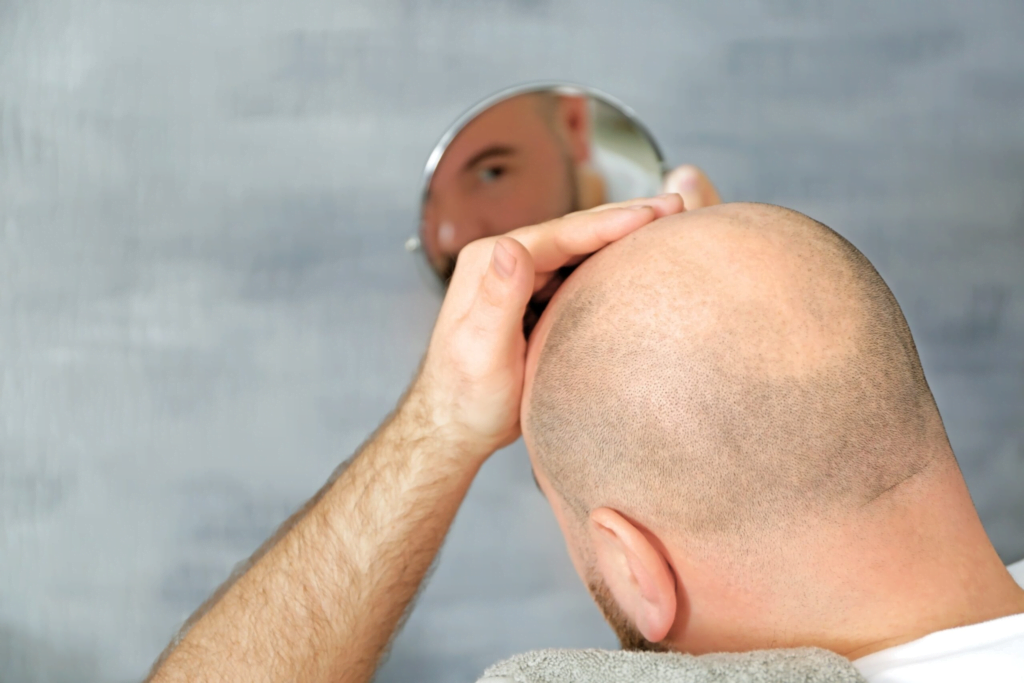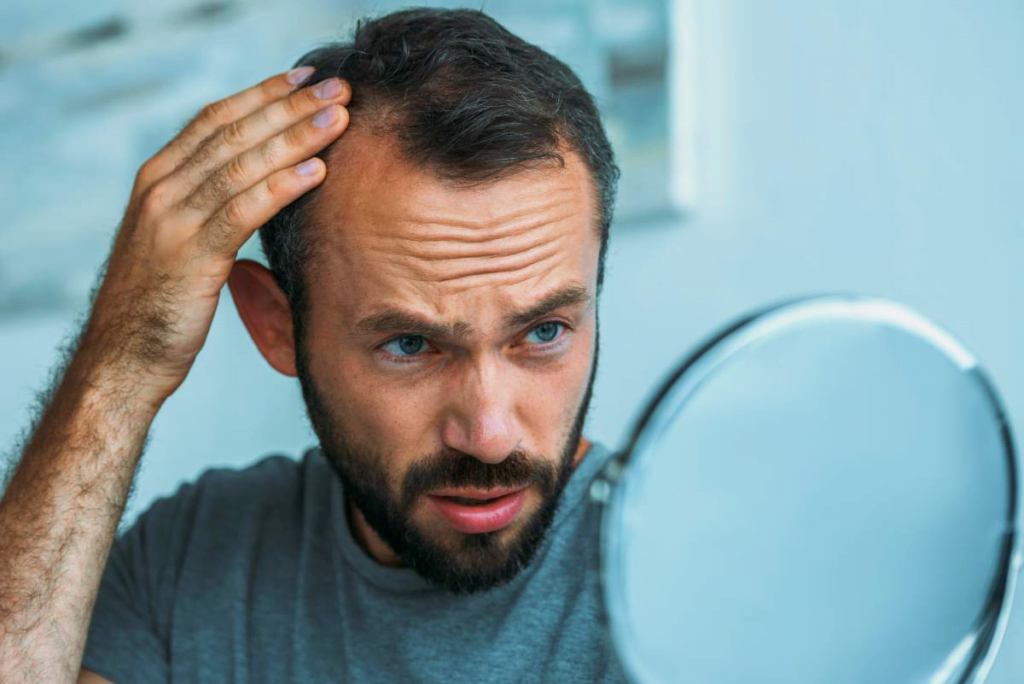The natural and permanent results of hair transplantation are not an urban legend; however, there are still many questions that need to be answered for people considering hair transplantation. One of those questions is about the donor area.

Hair transplant candidates are often concerned about whether the areas where donor follicles are removed during transplantation will grow back. Let’s answer this question from the beginning: Yes! The hair in the donor area will grow back. However, in some cases, there may be a slight decrease in hair density. This decrease is not intense enough to be visible and is not noticeable. In addition to this question, if you have various concerns and questions about hair transplantation, you should always schedule a private consultation to make sure you fully understand the procedure.
The hair transplant process is a very delicate process in terms of the experience, precision and execution of your hair transplant surgeon and technical team. Although hair transplantation gives good results in general, making careful and correct choices increases the potential of the results. Careful follicle extraction, grading and implantation during hair transplantation should create a natural and whole look.
İçindekiler
General Condition of The Donor Area After Hair Transplantation
The donor area is very important not only after hair transplantation but also afterwards. Because hair regrowth in this area is extremely important for people who will have hair transplantation. The donor area preferred for the transplantation process is potentially made from the parts where there is no hair loss and there is a lot of hair. The procedure is performed using various methods and techniques so as not to risk the possibility of hair growth around the donor area.
During the surgery, the hair transplant specialist removes healthy follicles from the scalp and uses these follicles to improve the area to be transferred. Pay attention to these steps to protect the donor area and get the most efficient results from hair transplantation:
- Have your scalp and hair health analyzed by our hair transplant specialists to understand whether you are a suitable candidate for hair transplantation.
- Understand the areas with a sufficient number of healthy donor hair.
- Calculate the number of grafts needed for the best results that meet your expectations.
- Identify areas with abundant follicles and thick, healthy hair. This way the donor area can be protected.
Hair regrowth in the donor area may vary depending on the care during the healing phase and the technique used by your surgeon. Follicular Unit Extraction (FUE) transplantation is highly popular as a convenient, minimally invasive, safe and effective method and best meets the expectations of candidates.
Hair Transplant Techniques and Donor Follicle Regrowth
n this topic, we will discuss the process of replacing donor follicles with new ones through techniques. Two main techniques are commonly utilized during transplantation surgery.
One of these techniques, Follicular Unit Transplantation or FUT, is an alternative method also called the strip method.
During FUT transplantation, a linear cut is created by removing a strip of tissue and hair from the donor area. Then close the incision with a row of sutures. When the stitches in the donor area are done with precision, it makes it almost impossible for scars to appear after healing. However, here, people should not neglect the care after hair transplantation and follow the instructions given. Otherwise, the scars may become visible. In such cases, it is expected that a thin scar will remain, potentially without hair growth.
In the technique known as Follicular Unit Extraction or FUE, microscopic incisions are made in the donor area. As part of this procedure, follicles that have been determined to be suitable in terms of density, health and texture are extracted one by one. FUT is a more complex and precise technique.
Within the scope of this technique, if enough healthy follicles are left in place and the tissue in the donor area is not damaged too much, hair will continue to grow in this area. One of the biggest advantages of FUE is that the location of the extracted follicle is not visible and a tiny invisible scar is left on it.
Recovery Periods in the Donor Area After Hair Transplantation
f FUE was preferred during the procedure, the donor area will start to heal after the first 24 hours. Discomfort or pain can last up to two days and can be controlled with various simple treatments such as painkillers. The healing process of the donor site usually proceeds as follows:
- The tiny incisions made during the procedure heal within three to four days.
- Full recovery takes about two weeks. During this time, small scars and remaining redness also heal.
- The hair follicles in the donor area will start to grow again after a maximum of 1.5 months.
- After about two weeks, there will be no appearance that the follicle grafts have been removed.
- After a year of full recovery, the donor area is integrated with the growth of the transplanted hair and the first natural appearance is achieved.
Supporting the Healing of the Donor Hair Transplant Area
To follow the instructions given for a complete and rapid recovery after hair transplantation. In addition, individuals who undergo transplantation should care for the treated area. Thanks to these instructions and care, you can get maximum efficiency from hair transplantation and prevent the possibility of bad appearance. Although the instructions given vary from person to person, the general instructions are as follows:
- Using medicated creams or ointments in the first days after the transplant will be effective in healing the wounds. Taking prescription painkillers will also help to relieve pain. These steps prevent infection and promote comfortable healing.
- Avoid strenuous and heavy exercise, exposure to direct sunlight and swimming for the first two weeks. This maintains hair health by keeping the transplanted follicles and donor area sterile.
- It is extremely important to moisturize your skin to soothe the scalp during the healing process. Follow ongoing recommendations and schedule follow-up check-ups and hair restoration therapies to optimize your healing process.
Following these professional recommendations and supporting them with care can speed up your healing process and increase the speed and health of your hair regrowth.
Conclusion

Consultation is extremely important for hair transplant candidates. During this consultation, the surgeon will evaluate whether your hair and scalp are suitable for hair transplantation in general. At this stage, you can get support from our clinic and get more information.
You should make sure that you choose the right surgeon to combine your realistic expectations with natural and permanent results. Hair transplantation is a process that requires patience but satisfying results. It will take time to see the full results at the donor and transplant sites. Regardless of the condition of your hair loss, hair transplantation, especially in combination with FUE, has proven to be a successful approach. You no longer need to fear the extent of your baldness and the severity of your hair loss.
Hairtrans.com was founded by world-famous plastic surgeon Dr. MFO, who is an expert in facial feminization or facial masculinization surgeries, and is managed under his leadership. Would you like to have a hair transplant under the coordination of a plastic surgeon with many years of experience?
Whether you are a trans woman or a natural born male or female, if you are looking for the best hair transplant, contact us now.


